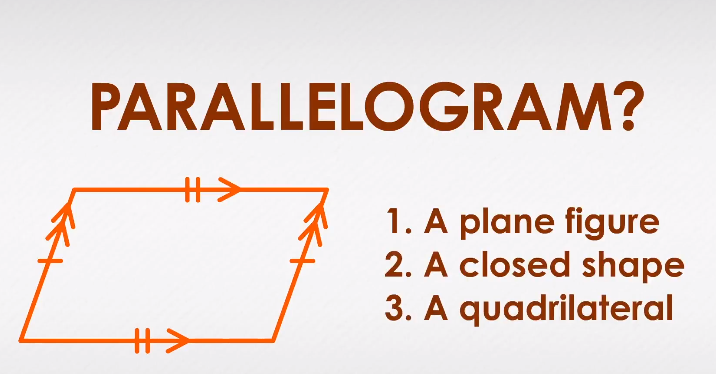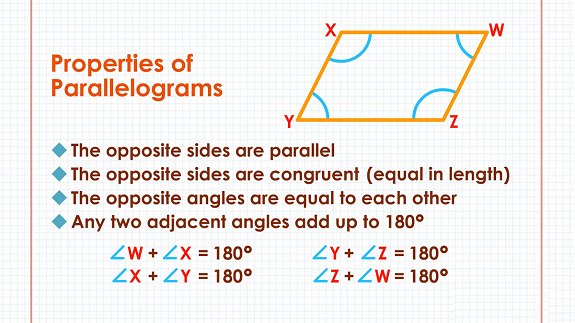Unit 6 Lesson 2 Properties of Parallelograms
Unit 6 Lesson 2: Properties of Parallelograms
Lesson Overview
Perpendicular Bisectors
What You Will Learn
- how to use relationships among sides and angles of parallelograms and its diagonals
Overview
In this lesson, you will learn how to use relationships among sides and angles of parallelograms and their diagonals. A parallelogram is a quadrilateral with both pairs of opposite sides parallel. In the Solve It (online textbook), you made some conjectures about the characteristics of a parallelogram. In this lesson, you will verify whether your conjectures are correct.
Essential Understanding
Parallelograms have unique properties regarding their sides, angles, and diagonals.
In a quadrilateral, opposite sides do not share a vertex, and opposite angles do not share a side.
- Read pages 256-263 in your course textbook.
This course is based on a textbook that is viewable by clicking on the textbook icon. Keep the textbook open while you go through the lesson so that you may refer to it throughout the lesson.
Additional Resources
Lesson 2: Properties of Parallelograms
Proceed to the Next Page
Prepare for Application
Instructions
You have now studied the Properties of Parallelograms. It is now time to demonstrate your learning.
Try the activities below on your own. You should be able to answer these before beginning the practice.
Create an extra journal called 'Unit 5: Lesson 2 activities' and do these in your journal.
Activity 1
Use the first figure on page 207 (Problem 1) in your online textbook for question 1.
- What is the length of AB?
Activity 2
Use the first figure on page 208 (Problem 2) in your online textbook for question 1.
- A park director wants to build a T-shirt stand equidistant from the Rollin' Coaster and the Spaceship Shoot. What are the possible locations of the stand? Explain.
Activity 3
Use the first figure on page 209 (Problem 3) in your online textbook for question 1.
- What is the length of RM?





